Fresh Pesto with Trofie Pasta
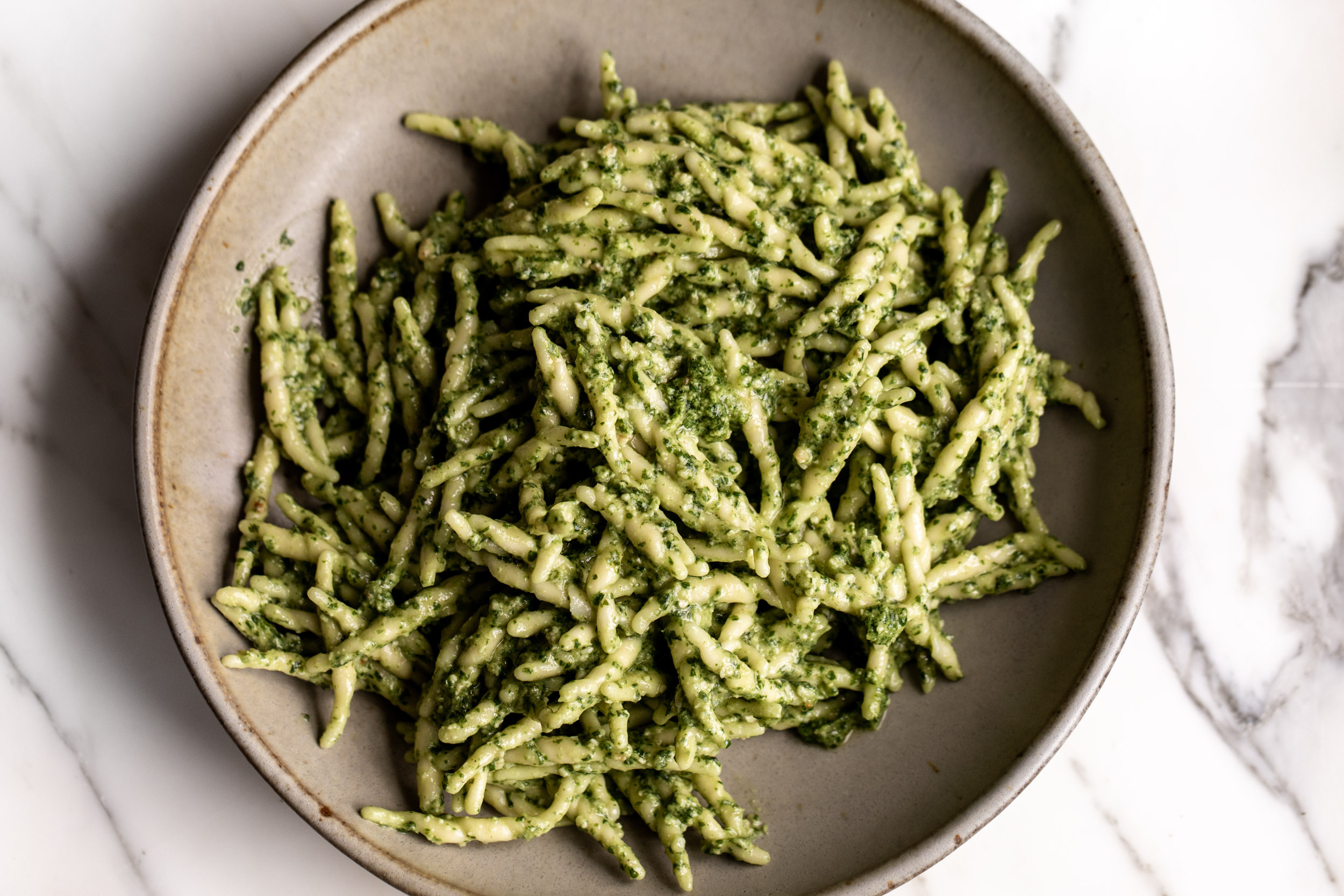
jump toRECIPE
Pesto is the ultimate summer sauce, it has a light flavor, and it’s so bright and fresh. Pesto works well over pasta or as a dip with bread, but let’s face it, anything tastes good with some pesto… it looks pretty too! Trofie pasta is traditionally served with pesto because the twisted shape of the noodle holds the sauce so well.
Fresh pesto can be served over chicken, used as a salad dressing or as a dipping sauce with bread.
Fresh Pesto with Trofie Pasta
Table of contents
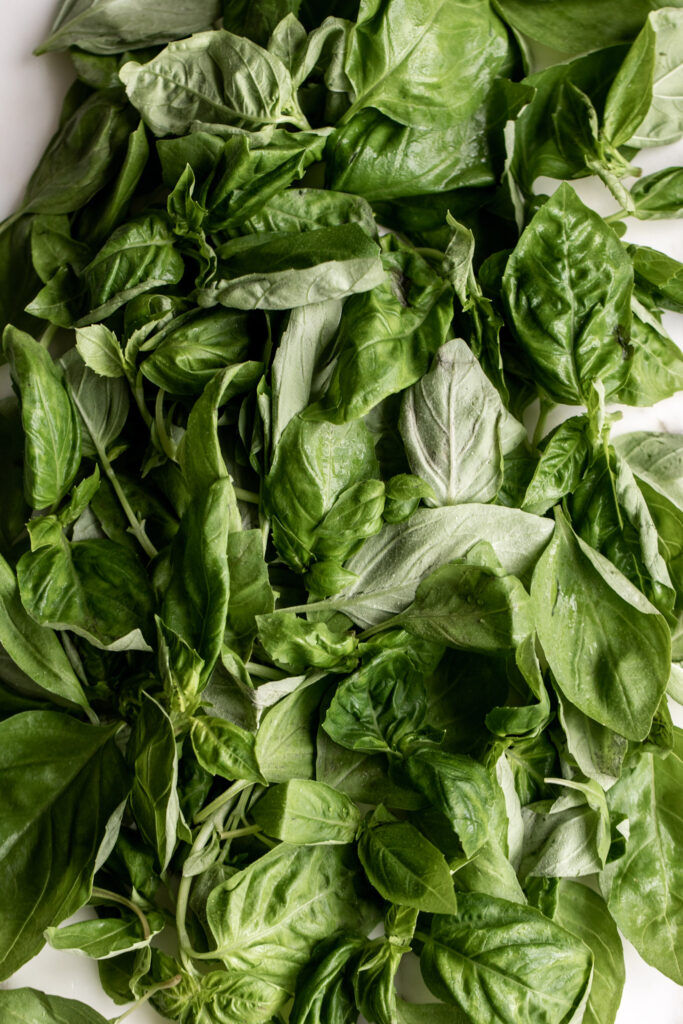
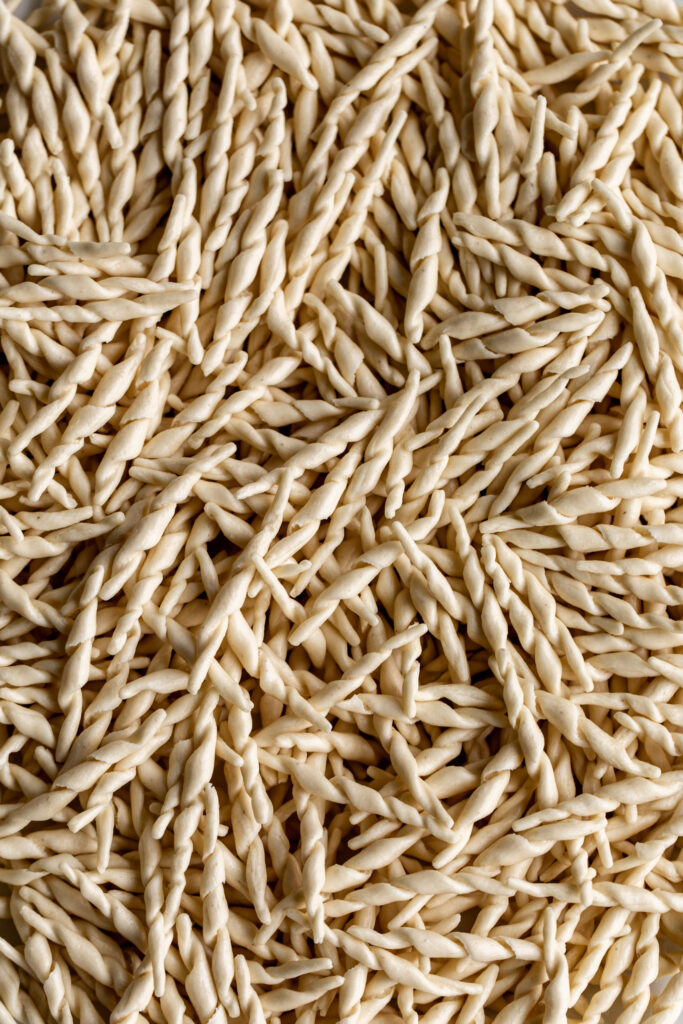
Key Ingredients in This Recipe
- Basil – Pick the leaves off the stem of the basil and just before making the pesto.
- Pine nuts – Pine nuts add a buttery and creamy texture to the pesto. Toasting the pine nuts adds a more complex, nutty flavor than using raw pine nuts. To toast them simply add them to a nonstick pan for a few minutes, stirring frequently. Just be sure to completely cool the nuts before making the pesto.
- Parmesan – Adding salty, aged cheese like Parmesan (or Pecorino Romano) keep the sauce chunky while adding a cheesy element. The cheese helps to thicken the pesto.
- Olive oil – While all olive oil comes from the fruit of olive trees, it’s not all created equal. Extra-virgin olive oil is unrefined and made from pure, cold-pressed olives, giving it more of a true olive taste. Regular olive oil is made from a blend of both cold-pressed and processed oils. I recommend using extra-virgin olive oil for this recipe.
- Pasta – While this fresh pesto can be made with just about any pasta shape it’s traditionally paired with trofie. Trofie is a short, hand-twisted pasta shape from Liguria, Italy.
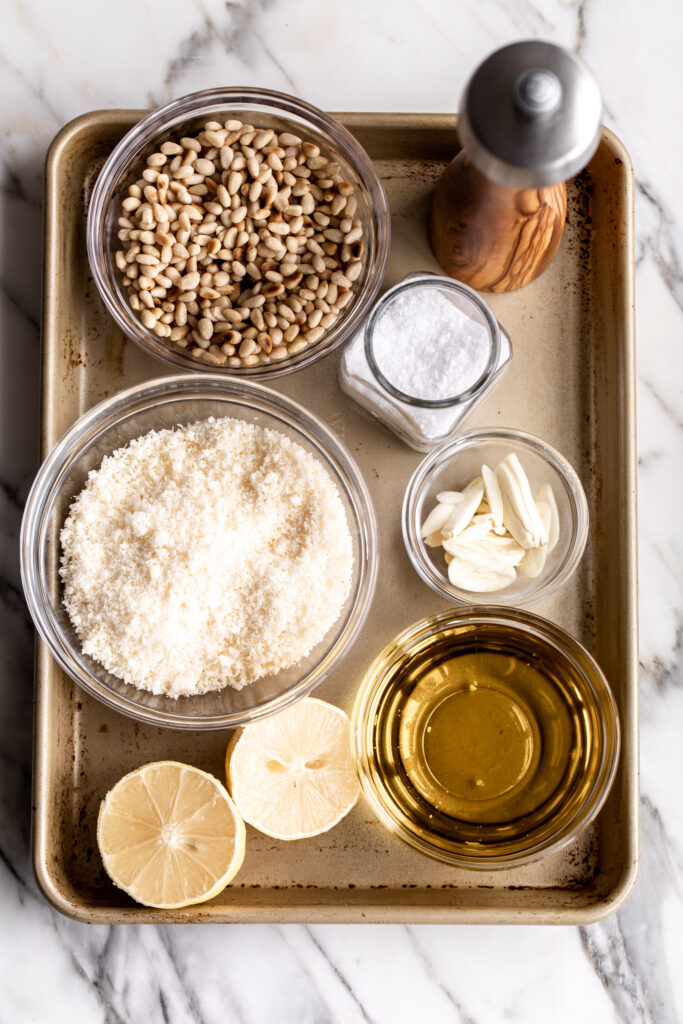
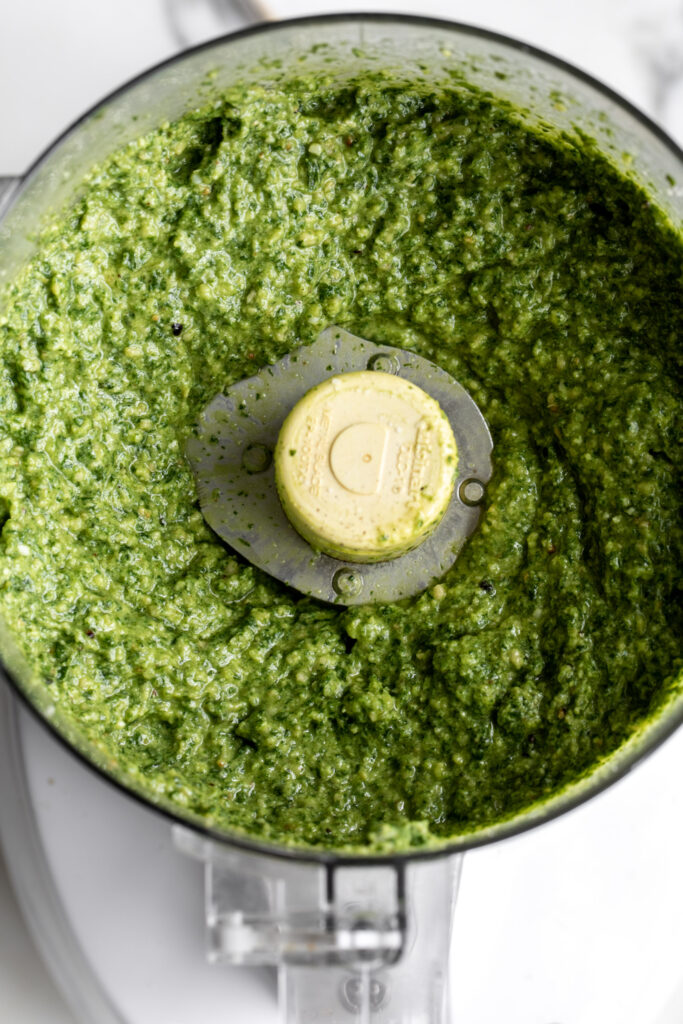
How to Make Pesto with Fresh Basil
- Wash basil. Pick the basil leaves off the stems then rinse and pat the basil dry.
- Blend the pesto. Place the basil, Parmesan cheese, pine nuts, garlic and lemon juice in a blender or food processor fitted with a blade attachment and blend.
- Continue to blend. Stop the blender or food processor and stir occasionally, scraping down the sides, to make sure all ingredients are combined. Add olive oil and pulse once more. The mixture should still be slightly chunky.
- Season. Season to taste with salt and pepper.
- Cook the pasta. Bring a large pot of water to the boil; add the salt and bring back to the boil. Pour in the pasta and cook, stirring occasionally, until al dente, about 10 minutes.
- Assemble and serve. Drain, reserving 1/2 cup of the pasta cooking water. Return the pasta to the pot. Ladle in the desired amout of pesto to coat the pasta, adding pasta water as needed to loosen the sauce. Stir and serve.
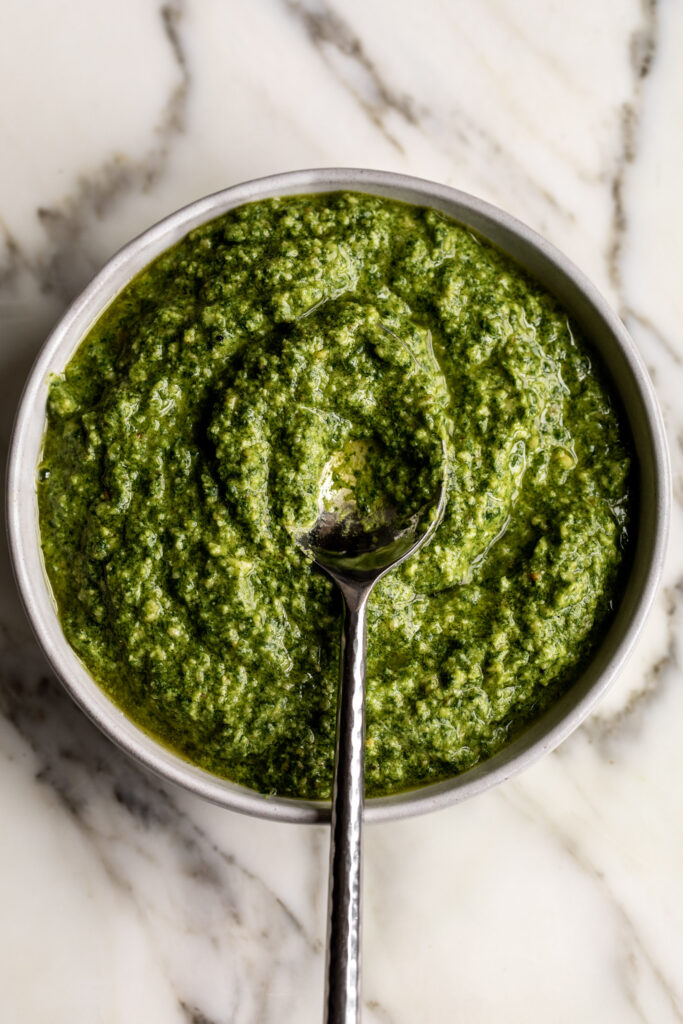
Tips and Tricks for This Recipe
Tips for the best pesto
- Blending it too much will result in more of a butter consistency rather than a sauce. You still want to be able to tell what the ingredients are when you stop blending.
- Blanching the basil leaves helps the basil tor retain their bright color. Cook it quickly (just for 5 seconds) in boiling water for just a few seconds before rinsing under cold water and draining and patting it dry.
- The basil can be substituted with another green like arugula or kale.
Swaps and Substitutions
This recipe is made with the classic combination of basil and pine nuts you can make these swaps to change up the flavors:
- Greens. Add a handful of other greens like spinach, kale or chard.
- Herbs. Either swap the basil entirely or add other fresh herbs like mint, cilantro or parsley.
- Cheese. I absolutely love Parmesan but it can be swapped for another grated hard cheese like Pecorino Romano, Asiago, grana padano or manchego.
- Nuts. Rather than using the traditional pine nuts, swap for walnuts, pecans, almonds or seeds like pumpkin or sunflower seeds.
How to store pesto
The sauce can be made ahead of time and refrigerated up to a week until ready to use. If you are refrigerating the pesto, it will oxidize and turn dark when it has been stored.
To prevent it from turning dark, add a think layer or olive oil to the surface, this will keep the air out and prevent oxidation. When ready to serve, just stir the olive oil back into the pesto.
Serving Suggestions
I love pesto over pasta but it is also delicious with these other pairings:
- As a sandwich spread like in this Tuscan turkey sandwich, this caprese sandwich or this eggplant parmesan sandwich.
- With pan fried eggs.
- Served over fish like pan-fried white fish or salmon.

Other Recipes to Try
If you enjoy this homemade fresh pesto recipe, I recommend checking out some of these:
Fresh Pesto with Trofie Pasta
Ingredients:
- 6 ounces fresh basil leaves
- 1 cup grated Parmesan cheese
- ½ cup toasted pine nuts
- 3 cloves garlic sliced
- ½ medium lemon juiced
- 1 cup extra-virgin olive oil
- Kosher salt, as needed
- Freshly ground black pepper, as needed
- 1 pound trofie pasta (or other favorite pasta shape)
Instructions:
- Pick the basil leaves off the stems then rinse and pat the basil dry.
- Place the basil, Parmesan cheese, pine nuts, garlic and lemon juice in a blender or food processor fitted with a blade attachment and blend.
- Stop the blender or food processor and stir occasionally, scraping down the sides, to make sure all ingredients are combined. Add olive oil and pulse once more. The mixture should still be slightly chunky.
- Season to taste with salt and pepper.
- Bring a large pot of water to the boil; add the salt and bring back to the boil. Pour in the pasta and cook, stirring occasionally, until al dente, about 10 minutes.
- Drain, reserving 1/2 cup of the pasta cooking water. Return the pasta to the pot. Ladle in the desired amount of pesto to coat the pasta, adding pasta water as needed to loosen the sauce. Stir and serve.
DID YOU MAKE THIS?
TAG ME ON INSTAGRAM TO BE FEATURED ON MY STORIES! @cookingwithcocktailrings
This page may contain affiliate links. If you choose to purchase after clicking a link, I may receive a commission at no extra cost to you. Thank you for your support so I can continue to share recipes with you!

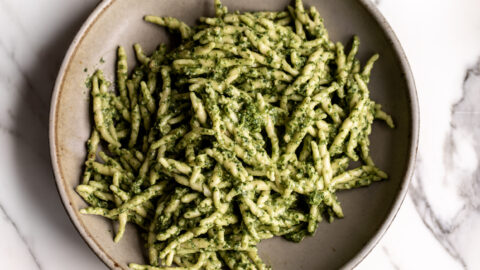
)
)
)
Rate + Review
WHAT DID YOU THINK OF THIS RECIPE?